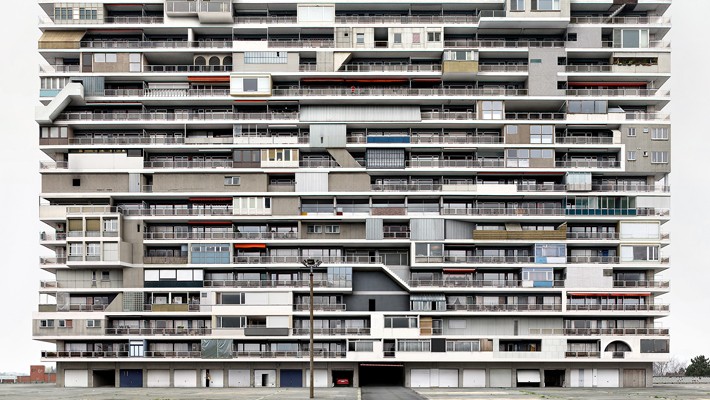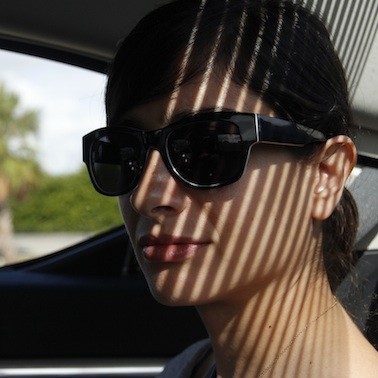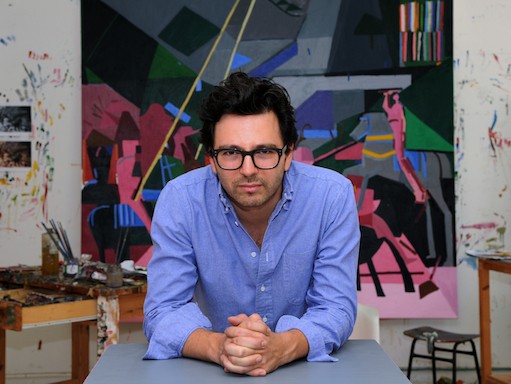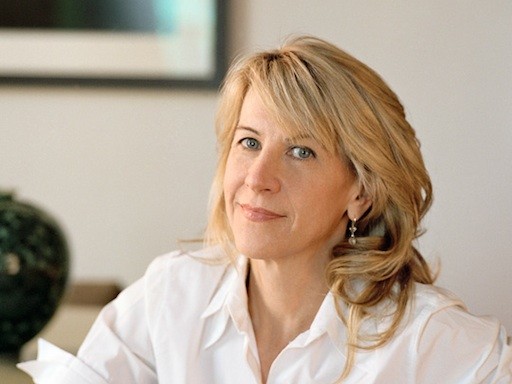The Belgian photographer Filip Dujardin has been garnering acclaim lately for his spectacular works employing digital manipulation to create mazelike, gravity-defying architectural compositions—impossible constructions that suggest housing projects designed by M.C. Escher. Now some of the world's most prominent museums are taking notice: his photography is currently on view in the Metropolitan Museum of Art’s landmark exhibition "After Photoshop: Manipulated Photography in the Digital Age," and last month his work was acquired by the Museum of Modern Art to join its permanent collection. We spoke to the artist about his technique, his inspirations, and his attitude towards architectural history.
While you manipulate reality in your work, providing a spectacularly illusionistic effect in many of your photos, your photographs often retain an element of plausibility—in other words the viewer can sometimes believe that these architectural structures are real. Other times, as when an architectural element is floating in mid-air, the compositions are clearly fantastical. How do you strike a balance between these two approaches?
As an architectural photographer I am aware of what is structurally possible in architecture. Nowadays, building techniques are so advanced that projects are apparently balanced on the edge of what is possible. As I am not an architect or engineer I have to trust an intuitive approach to architecture as well. While I am making these images, I can feel when the balance is shifting towards science fiction. There's still a kind of 'down to earth' approach to my process.
You studied art history and architecture at the University of Ghent. What made you want to build imaginary structures using digital images rather than brick-and-mortar buildings? Do you foresee yourself one day venturing into building physical structures?
As a child I was always busy with a kind of primitive way of doing architecture. This resulted in building structures with Lego blocks or cardboard castles. This free way of building is still how I create these digital photomontages. Real architecture is more practical and often results in a compromise. This summer I had the opportunity to build my first 3D installation in Middelburg (the Netherlands). It was an abstract translation of my photowork. There I could already feel the limitations of a real structure (maybe frustration) as I had to deal with a lot of technical, financial, and structural problems.
Where do you find the imagery that you use in your works? How do you source it?
As you probably noticed my images consist of fragments of photos of ordinary buildings. As banal structures are everywhere, my hometown of Ghent provided me with the most material. You don't have to travel a lot to find this kind of architecture.
How do you begin a project? With an idea of what you want the final product to look like or with a pre-existing structure with endless outcomes?
In the beginning I transformed photos of existing architecture. Afterwards I started from an actual model I photographed. Now I design the projects with 3-D software and cover them with pictures of existing buildings.
How would you describe the themes that you are exploring in your work?
I'm fascinated with several aspects that make architecture expressive: challenging gravity, surroundings, typologies, architecture versus nature, infrastructure, scale, and the relationship between humans and the built environment.
Where do you look for inspiration? Who are your favorite living artists and architects?
My prime inspiration comes from the things I see around me everyday. Sometimes unexpected solutions in ordinary or banal structures inspire me the most. I admire aspects of many artists and architects. Their particular vision on how to build our world can interest me.
Do you have a favorite architectural style?
Not really. I enjoy every style and period in architectural history when it is done on a high level. I also admire architecture that was not made by architects but only built out of necessity; this honest way of producing buildings is something very attractive for me.
Is there any other art-historical period that you wish you could have lived through?
I think the rise of modernism at the beginning of the 20th century must have been a very exciting period.
What made you want to become an artist?
Becoming an artist was not a strategy or a preconceived goal. I guess it just happened by making things other people appreciated.
What was your first significant art experience?
Visiting old cities in Europe with my family when I was a child surely had some influence on me. Seeing a cathedral gave me a sense of proportion and a feeling of the sublime.
How has your work changed over the course of your career?
I evolved from an architectural photographer that interprets work of others into making my own creations. I'm still exploring the possibilities and meaning that architecture can have. Maybe I will use architecture as a means to say something about the world in general. I don't wish to propose a new kind of architecture or alternative way of building. It's simply a visual exploration.
What do you hope other people get out of your art?
I often detect a sense of wonder when people see my work. Sometimes they project their imagination onto my pictures.
What would you be doing if you weren't an artist?
A musician: music, more than architecture, touches the emotion in people in a direct way.
What is indispensable in your studio?
A camera and a computer. These two things can produce your wildest ideas.
What is your favorite place to see art and architecture?
I travel a lot and every place I've seen is interesting in its own particular way.
What artwork or art destination would you most like to see?
On top of my list is visiting Yemen and its clay architecture. Especially the city of Shibam with its mud skyscrapers.
What is an artist's responsibility in society?
Artists transform the world by means of their medium and have the mission to show or reveal to society, comment or interpret different aspects of reality.
If you could get any artist to do your portrait, who would you choose?
I never thought of having a portrait made. This kind self-conceit is strange to me.



























